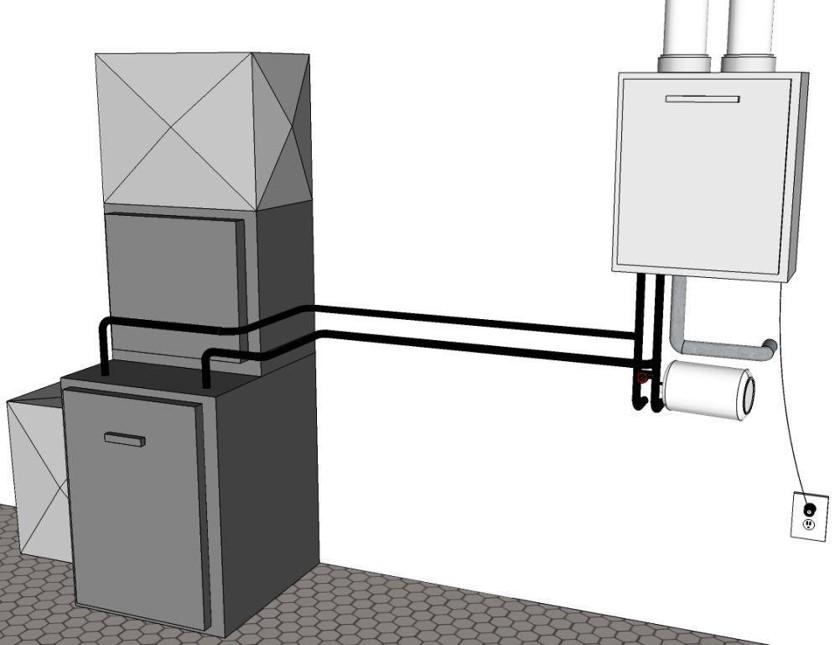
Plumbing
Tankless WHs Gas Fired
A gas tankless water heater’s basic components include a high-powered burner, fan, and heat exchanger. When a hot water tap is turned on, cold water enters the unit from the cold water supply and a sensor detects the water flow; then it activates a heating device, which raises the water temperature to a preset level. The heating element shuts off when the water flow from the fixture stops. These water heaters only consume energy when they are on.
Installing a gas-fired tankless hot water heater in a new or existing home provides on-demand domestic hot water—without the standby losses associated with tank storage water heaters.
Appropriate sizing of tankless water heaters should be based on the practical maximum flow rate needed at any one time in a home and the required heat rise of the water (which depends on the winter cold water temperature in the home’s location and the hot water setpoint temperature). Sealed-combustion, direct-vent, or power-vented equipment must be used in cold climates. The air intake and exhaust discharge vents have to be located sufficiently above the anticipated snow line, and the intake should be sufficiently separated from the exhaust vent to prevent frost buildup on the cold air intake pipe.
Applicable codes and standards include National Fire Protection Association (NFPA) 54; American National Standards Institute (ANSI) Z223.1-2018, Z21.10.3 / CSA 4.3-2017; 2018 International Plumbing Code (IPC); 2021 International Residential Code (IRC); and DOE Zero Energy Ready Home (Rev. 07).